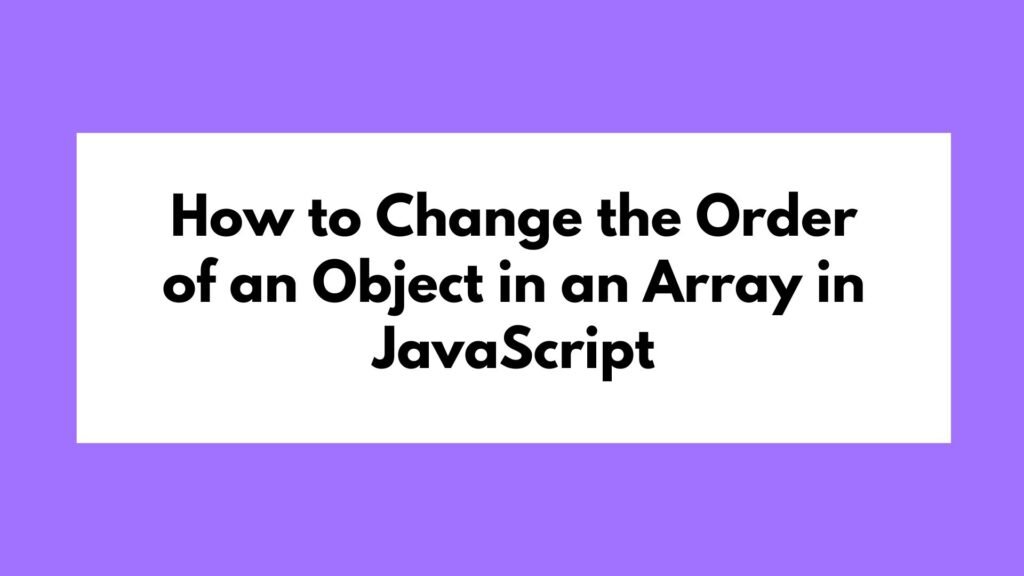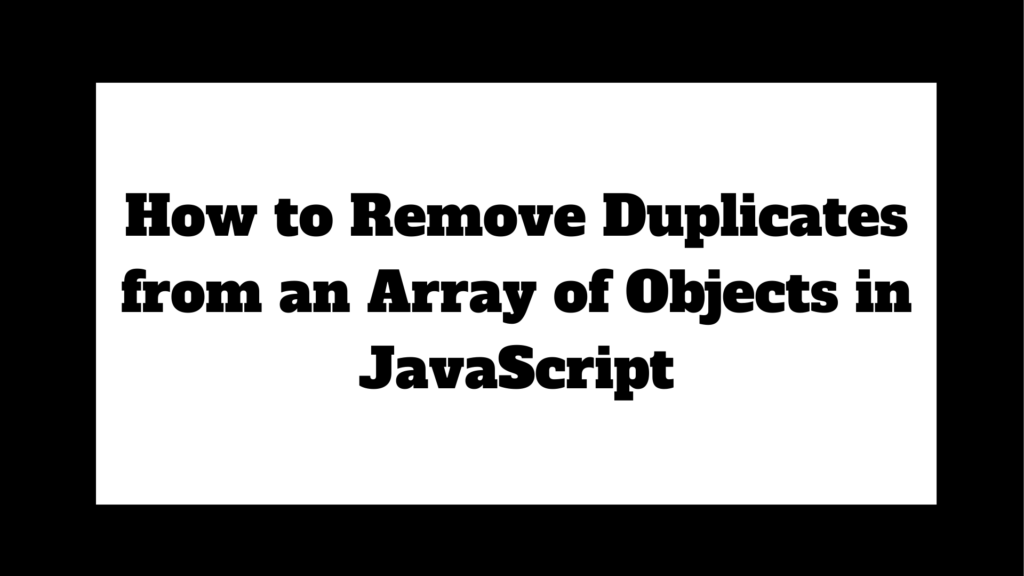
Finding an object in an array based on a specific property value is a common task in JavaScript. This guide will walk you through various methods to achieve this, ensuring that you can handle different scenarios efficiently.
const people = [
{ id: 1, name: "Alice" },
{ id: 2, name: "Bob" },
{ id: 3, name: "Charlie" }
];
const person = people.find(person => person.id === 2);
console.log(person); // { id: 2, name: "Bob" }
- Purpose: Learn how to find and retrieve an object from an array where a specific property equals a given value in JavaScript.
- Common Use Case: Filtering or searching through an array of objects based on a unique identifier or specific property value.
Methods on How to Get an Object from an Array Where a Property Equals a Specific Value in JavaScript
In JavaScript, arrays of objects are frequently used to store collections of related data. When you need to find a specific object within such an array based on a particular property value, there are several methods available. Understanding these methods ensures that you can efficiently search through arrays and retrieve the data you need.
Using the find Method
The find method is a straightforward way to retrieve the first object in an array that matches a specified condition.
Example 1: Finding an Object by Property
const people = [
{ id: 1, name: "Alice" },
{ id: 2, name: "Bob" },
{ id: 3, name: "Charlie" }
];
const person = people.find(person => person.id === 2);
console.log(person); // { id: 2, name: "Bob" }
Explanation:
people.find(person => person.id === 2);: Searches thepeoplearray for the first object where theidproperty equals2.console.log(person);: Logs the found object{ id: 2, name: "Bob" }to the console.
Using the filter Method
The filter method returns an array of all objects that match the specified condition. This is useful when multiple objects might meet the criteria.
Example 2: Filtering Objects by Property
const products = [
{ category: "electronics", name: "Phone" },
{ category: "furniture", name: "Chair" },
{ category: "electronics", name: "Laptop" }
];
const electronics = products.filter(product => product.category === "electronics");
console.log(electronics);
// [{ category: "electronics", name: "Phone" }, { category: "electronics", name: "Laptop" }]
Explanation:
products.filter(product => product.category === "electronics");: Filters theproductsarray to include only objects wherecategoryis"electronics".console.log(electronics);: Logs the filtered array containing all matching objects.
Handling Edge Cases
When searching through an array, it’s essential to handle cases where no match is found.
Example 3: Handling No Matches
const users = [
{ id: 1, username: "john_doe" },
{ id: 2, username: "jane_doe" }
];
const user = users.find(user => user.id === 3);
if (user) {
console.log(user);
} else {
console.log("User not found"); // Output: "User not found"
}
Explanation:
const user = users.find(user => user.id === 3);: Attempts to find a user withidequal to3.if (user) {...} else {...}: Checks if a user was found and handles the case where no match is found by logging “User not found”.
Using for Loop for Custom Logic
For more complex conditions or additional logic, a for loop can be used to manually search through the array.
Example 4: Using a for Loop to Find an Object
const books = [
{ title: "Book A", author: "Author 1" },
{ title: "Book B", author: "Author 2" }
];
let foundBook = null;
for (let i = 0; i < books.length; i++) {
if (books[i].title === "Book B") {
foundBook = books[i];
break;
}
}
console.log(foundBook); // { title: "Book B", author: "Author 2" }
Explanation:
for (let i = 0; i < books.length; i++) {...}: Iterates over thebooksarray.if (books[i].title === "Book B") {...}: Checks if the current book’s title is “Book B”.foundBook = books[i];: Assigns the found book tofoundBookand exits the loop.
Conclusion
Finding an object in an array based on a specific property value is a common requirement in JavaScript. Whether you use the find method for a single match, filter for multiple matches, or a for loop for custom logic, understanding these techniques will enable you to efficiently work with arrays of objects. By considering edge cases and choosing the right method for your needs, you can create robust and maintainable code.


